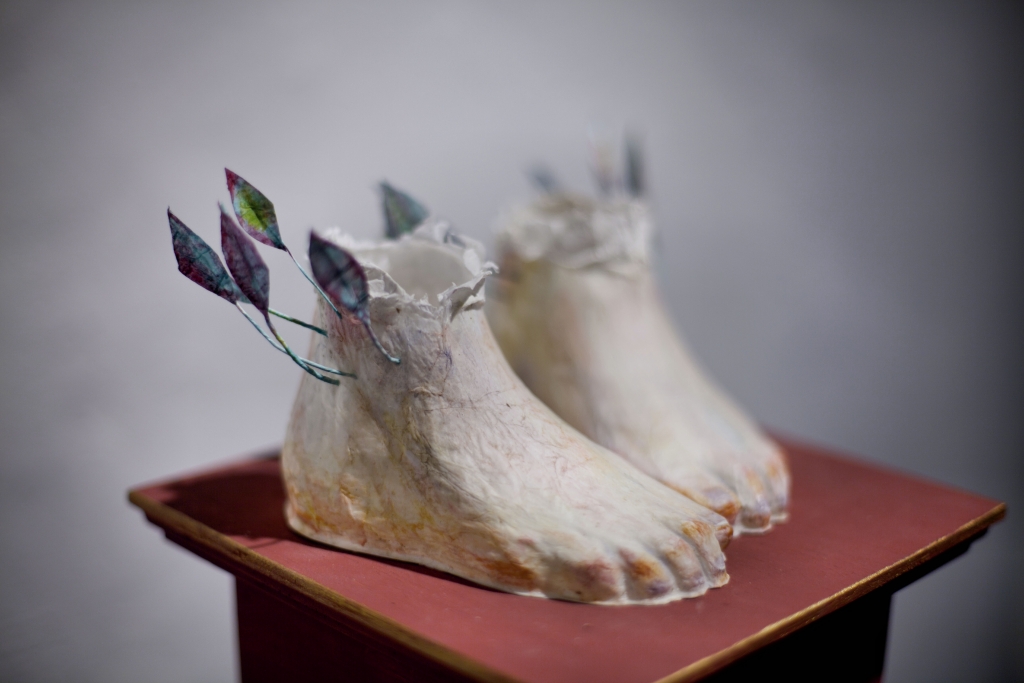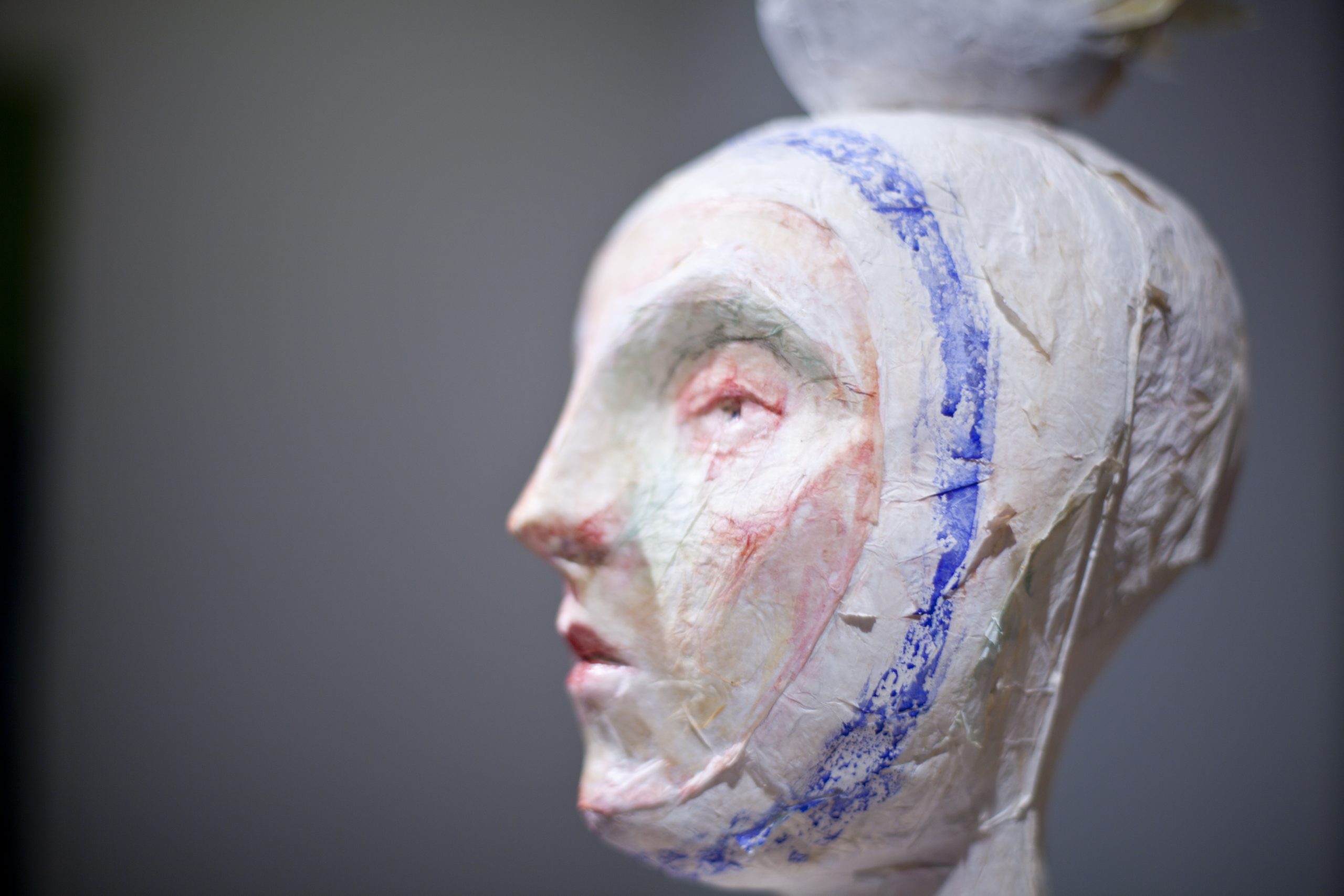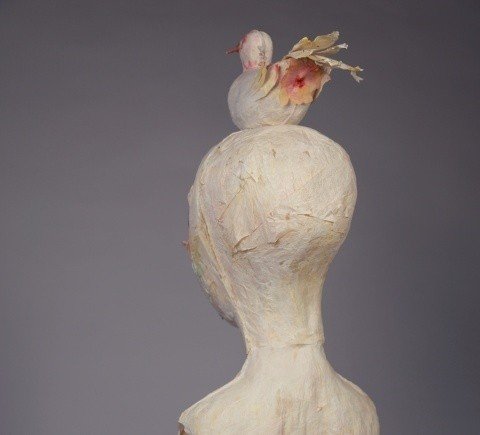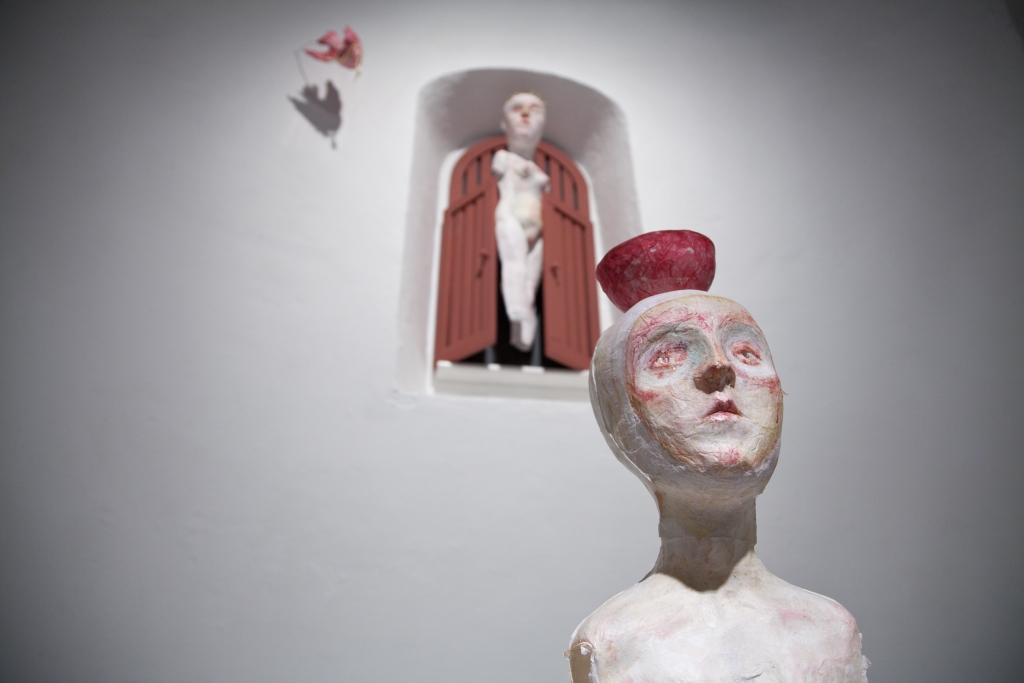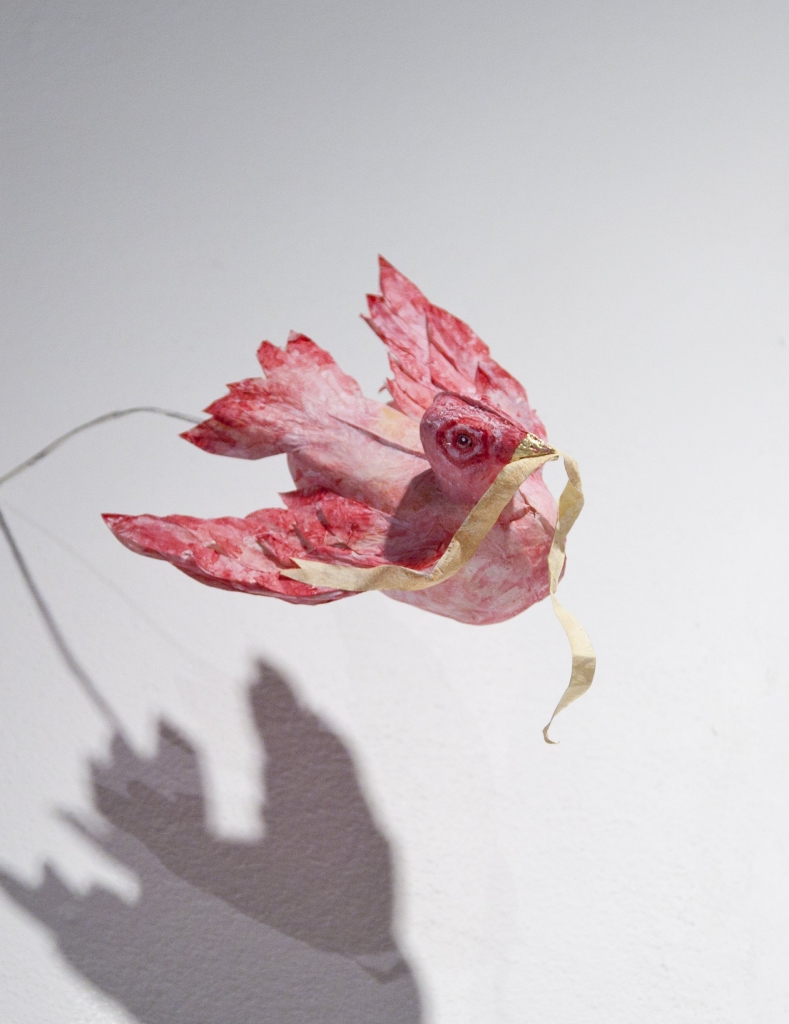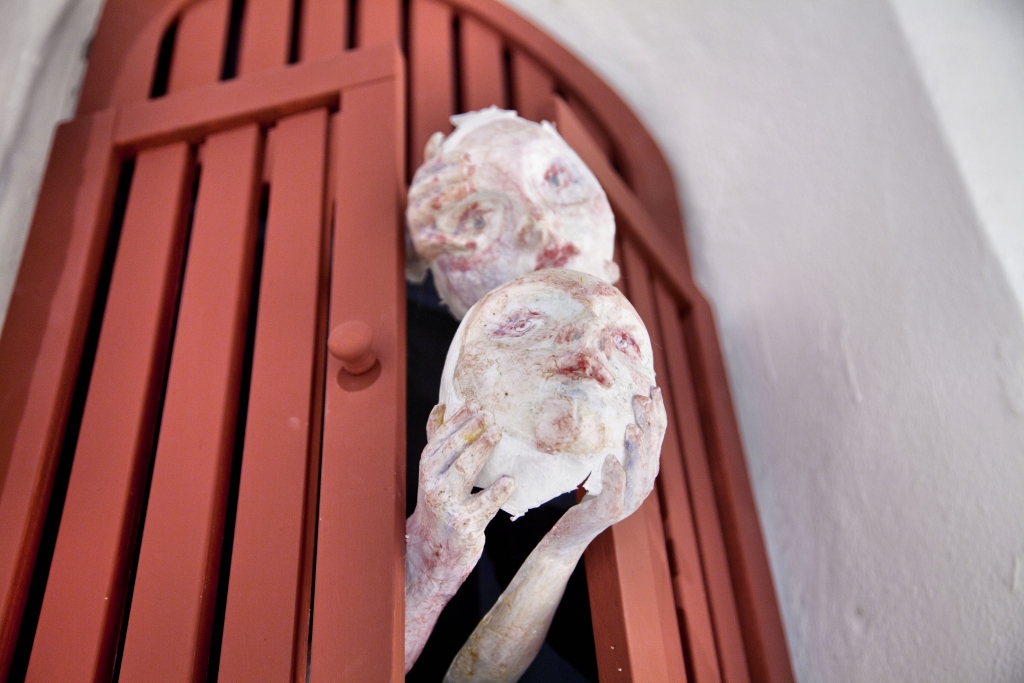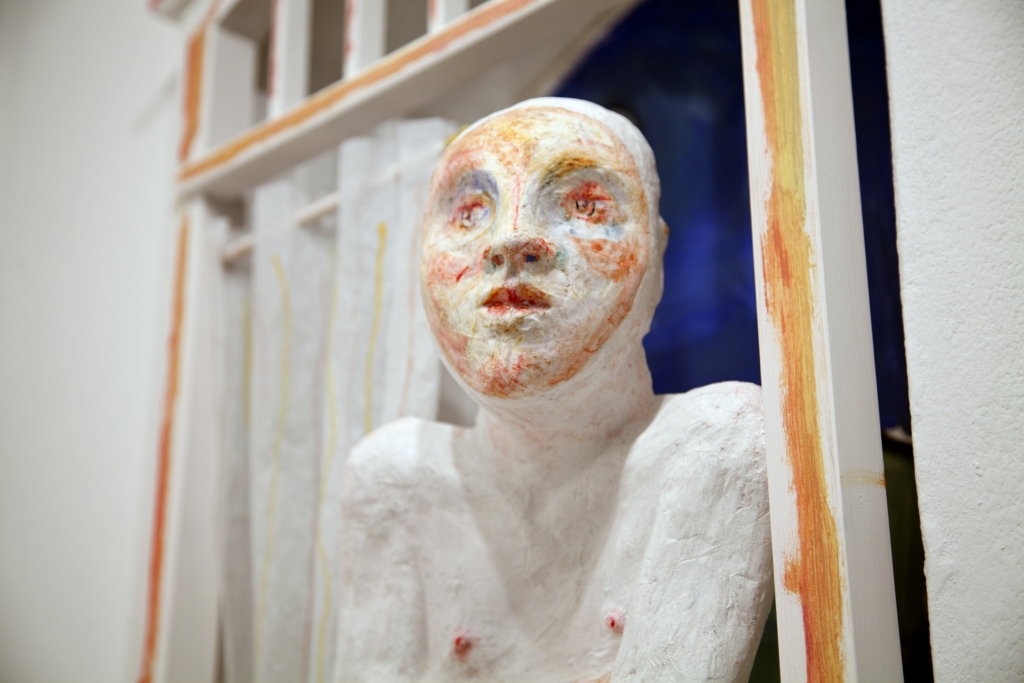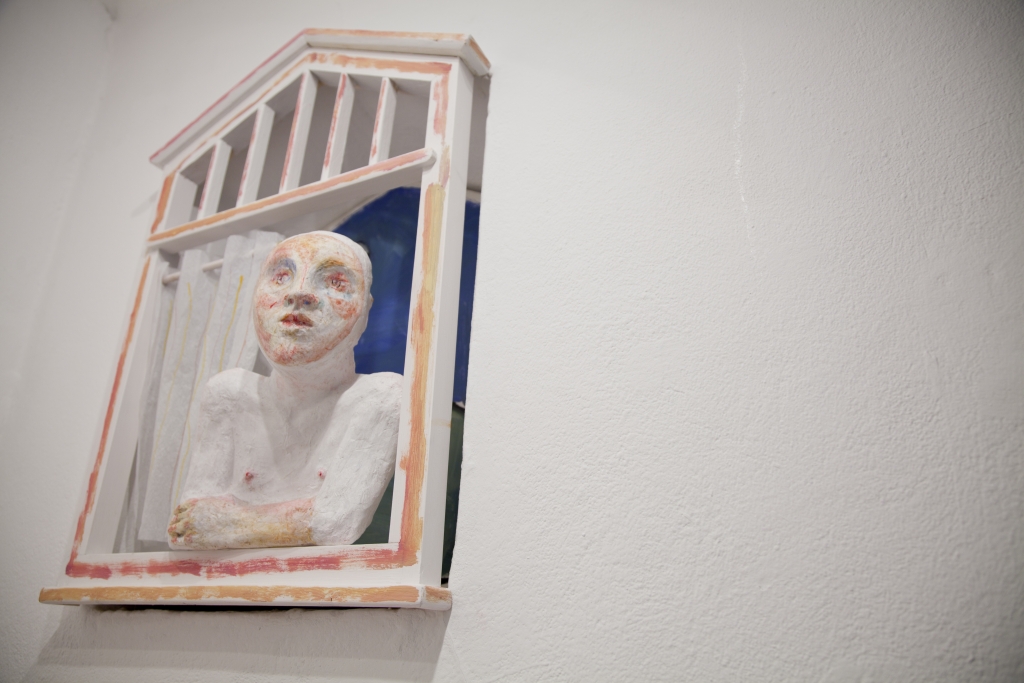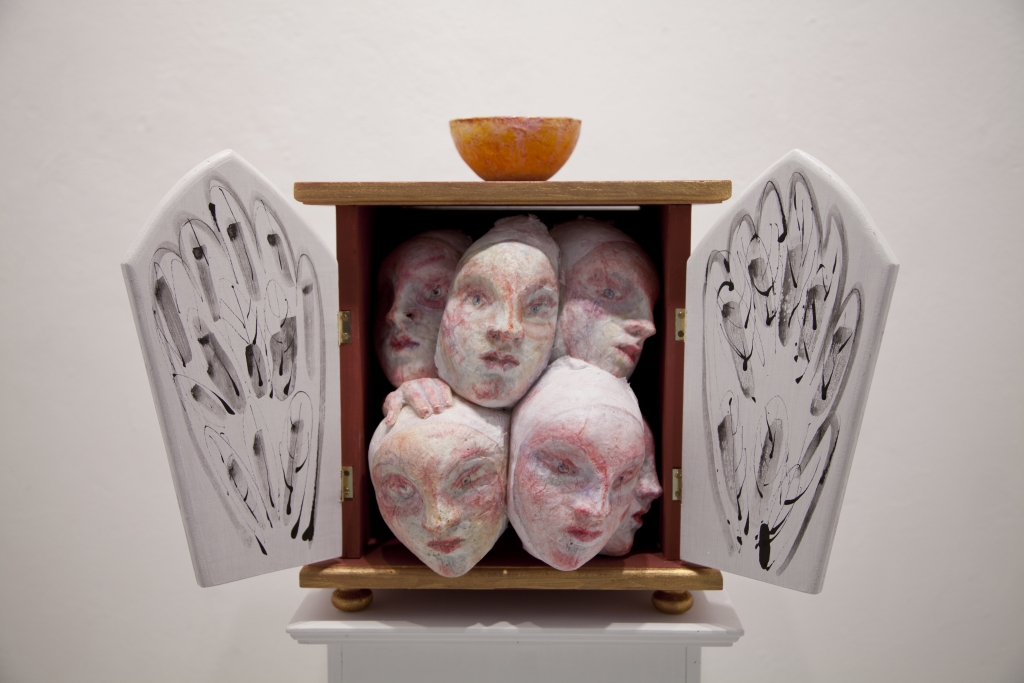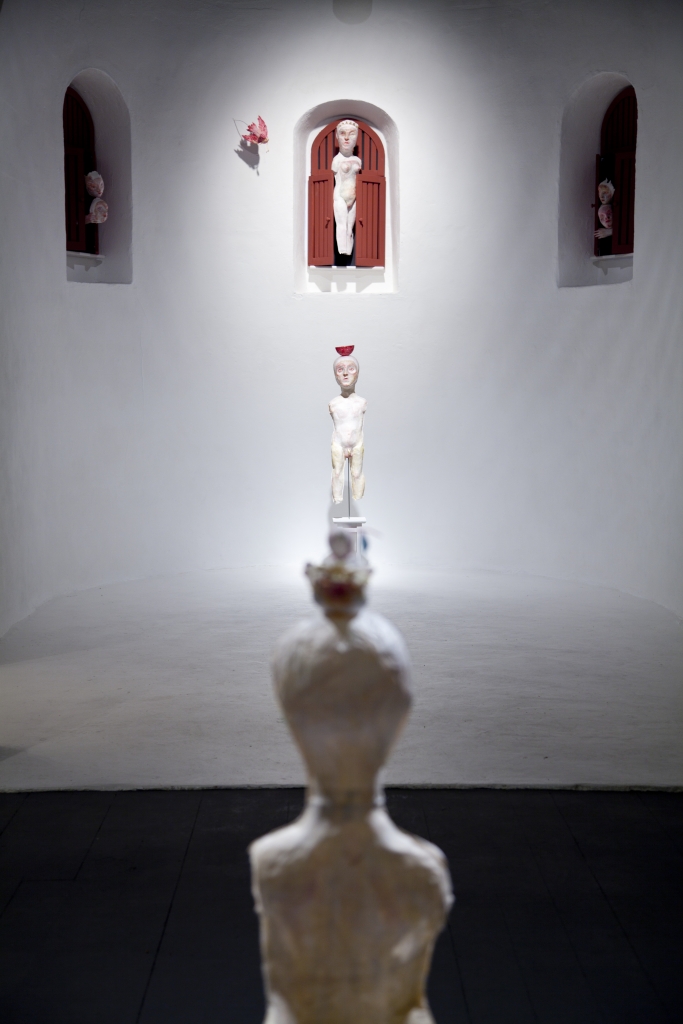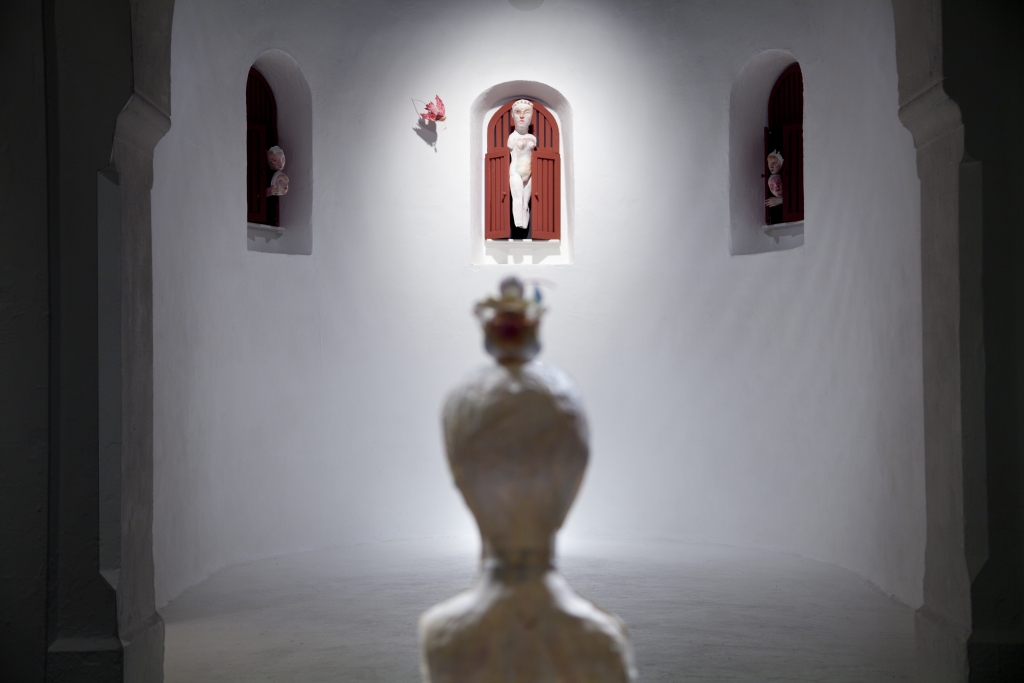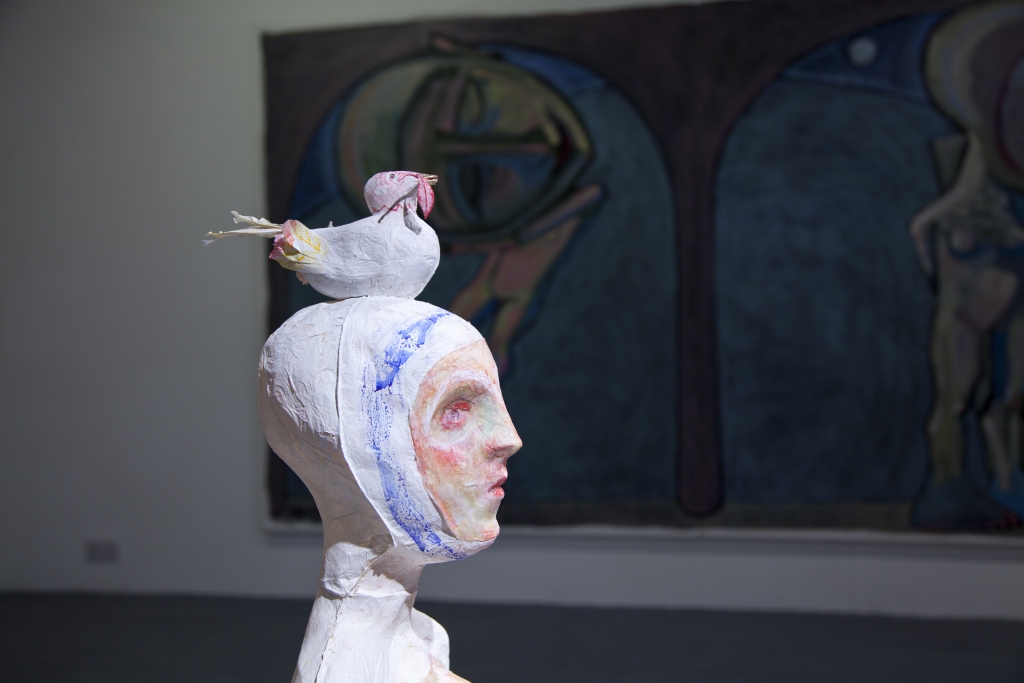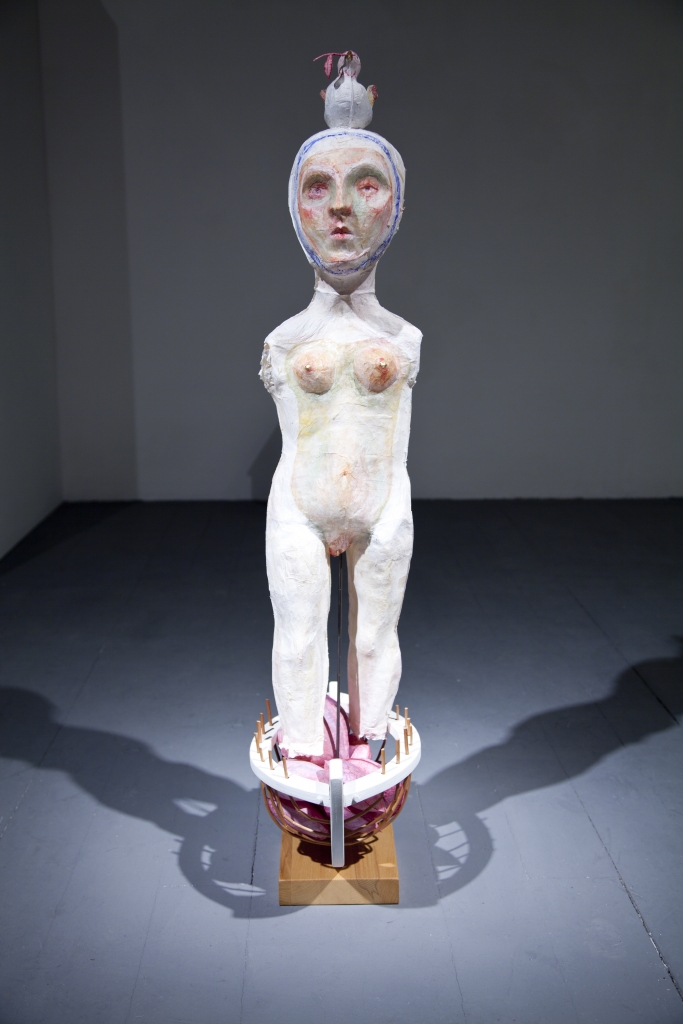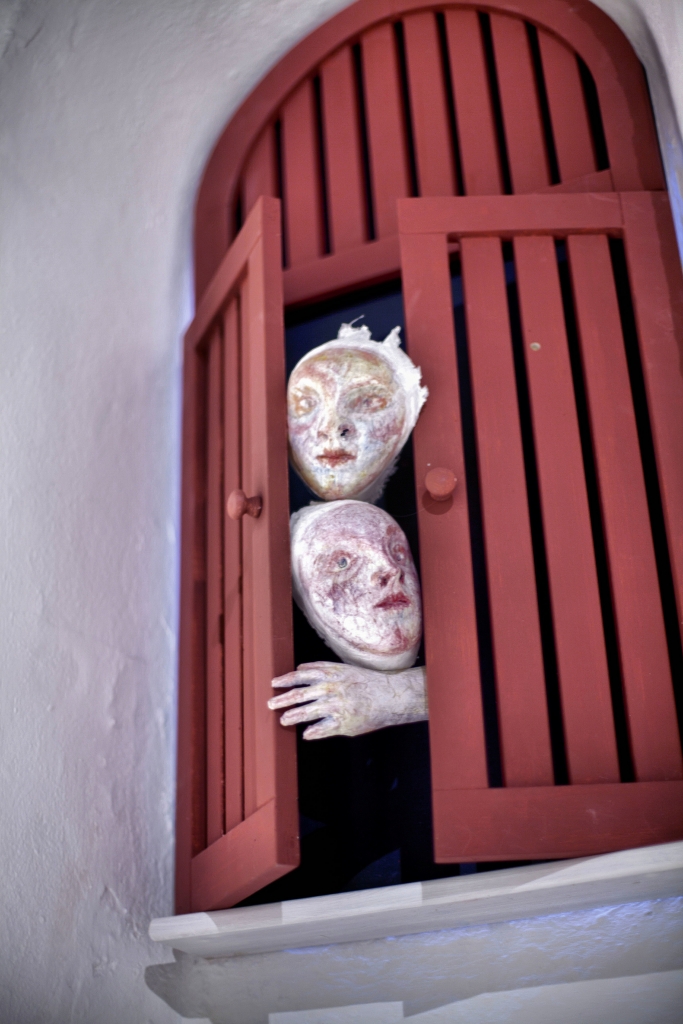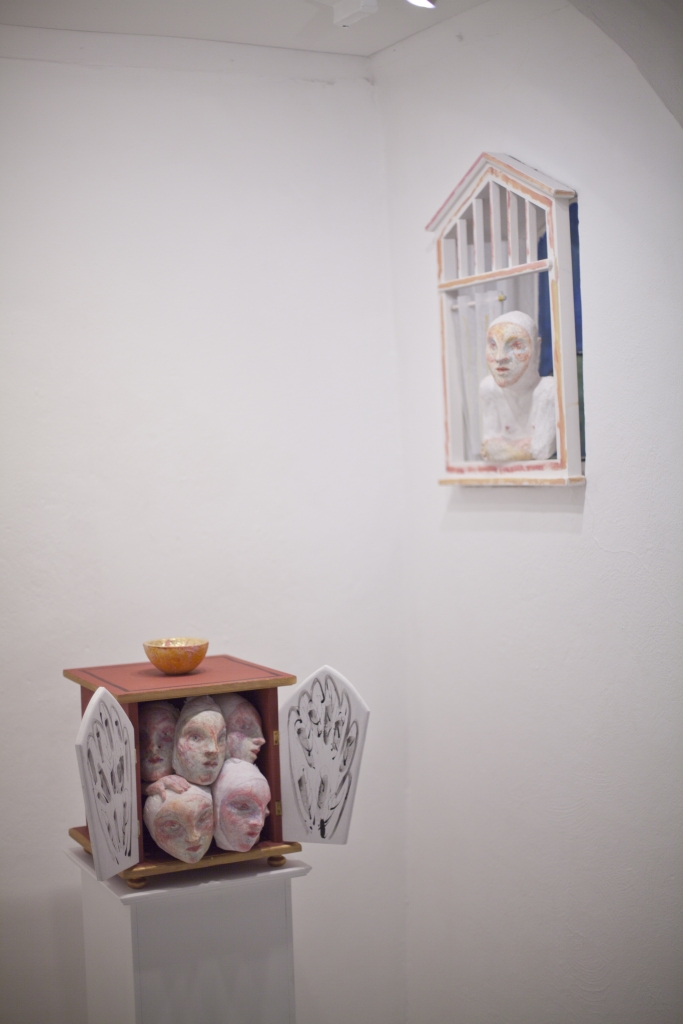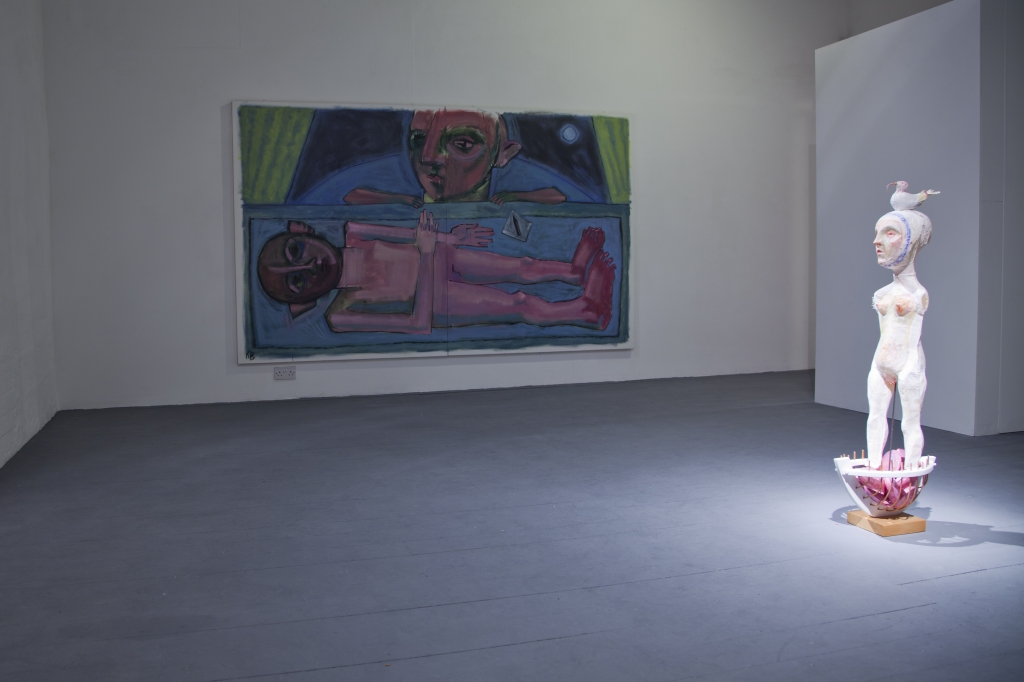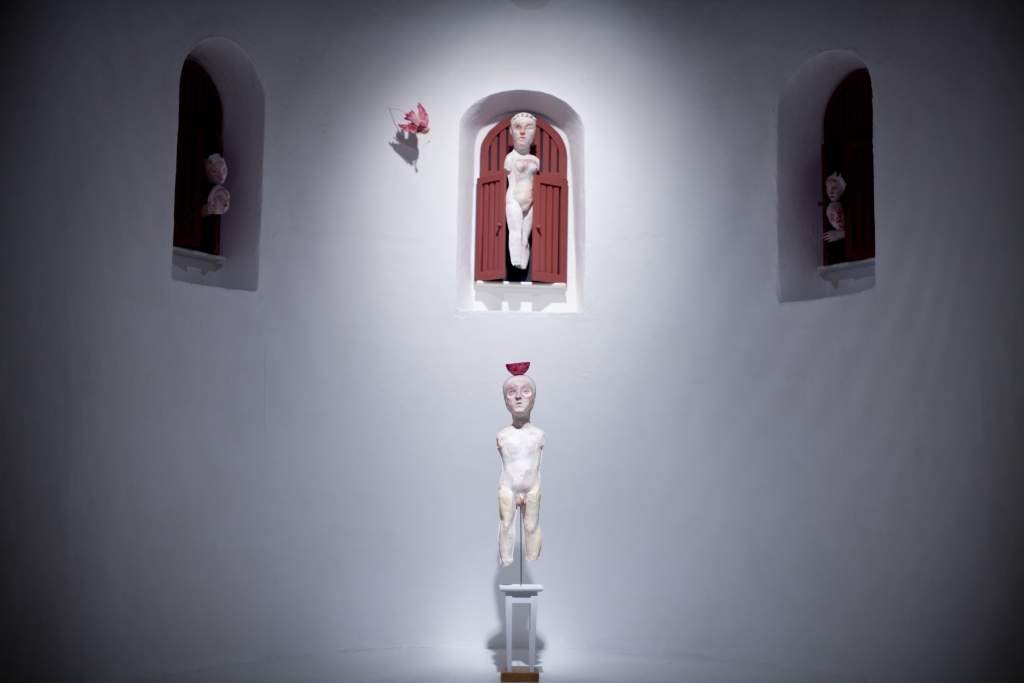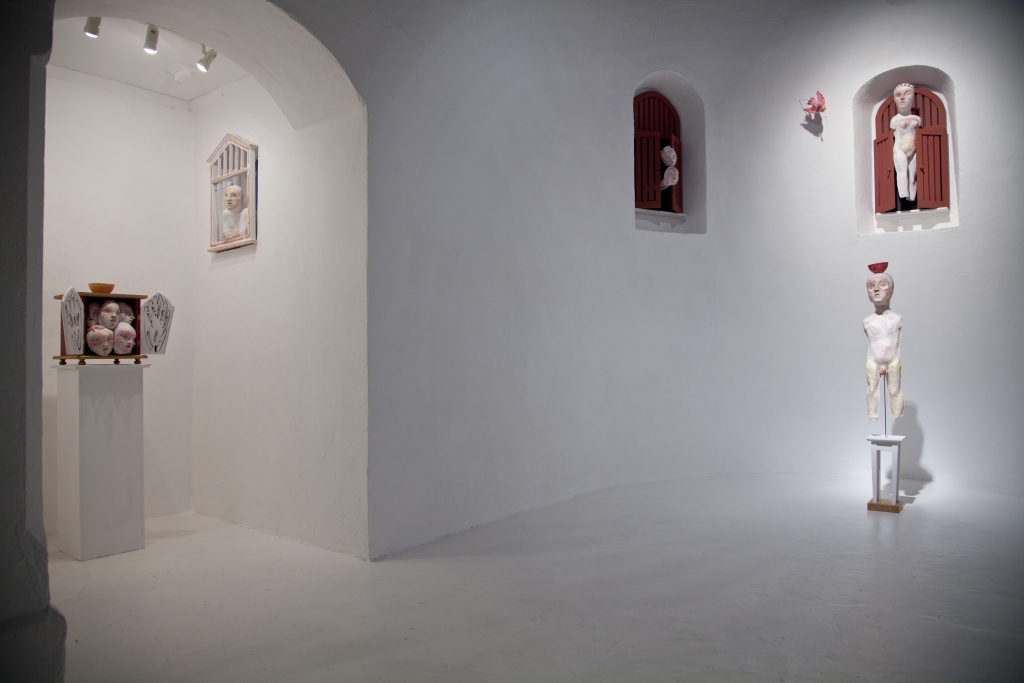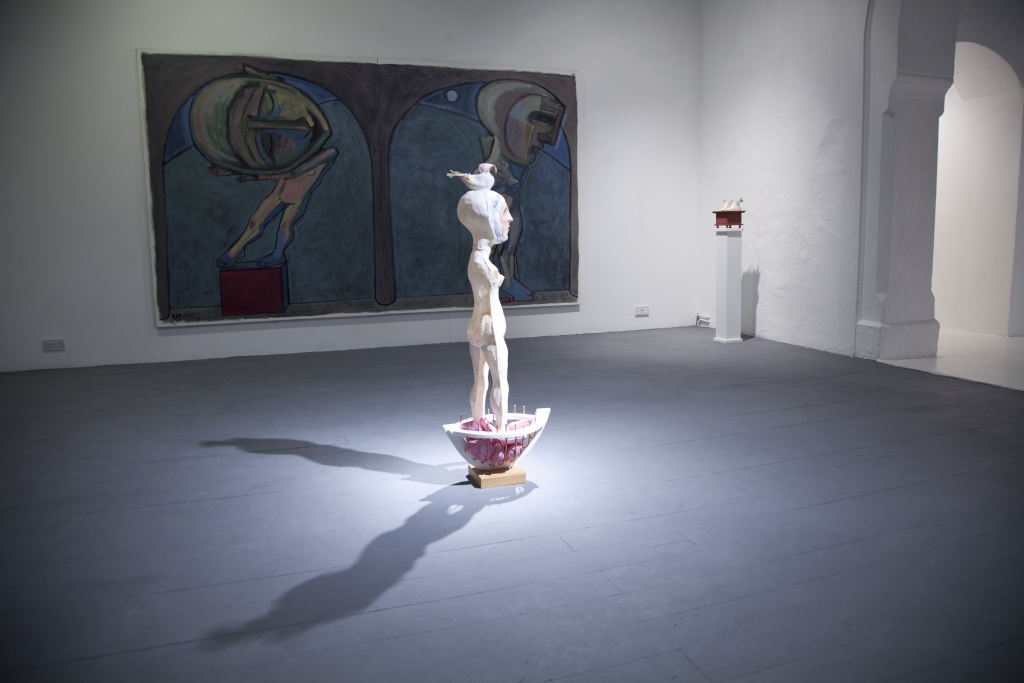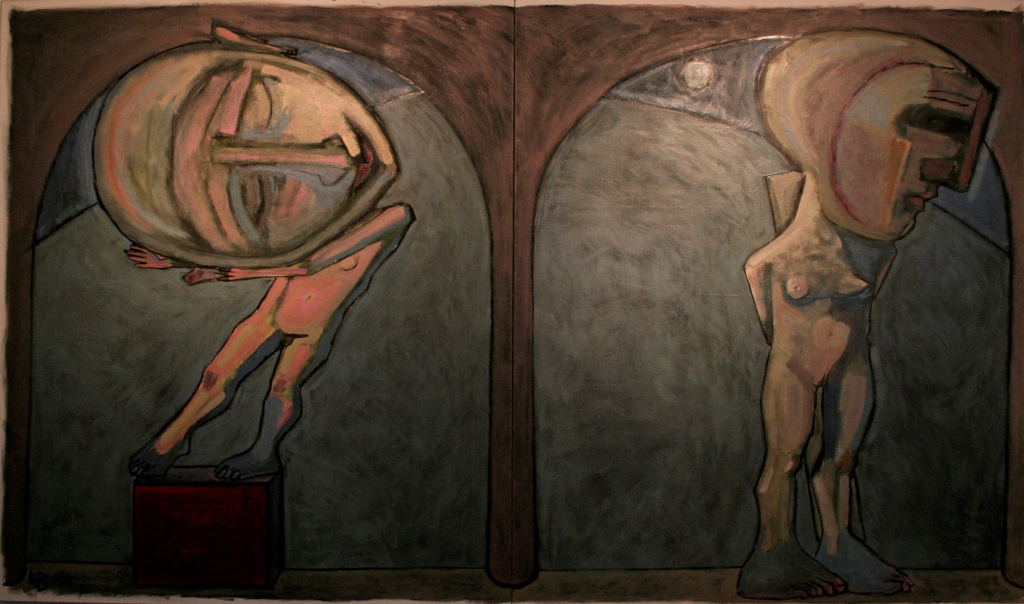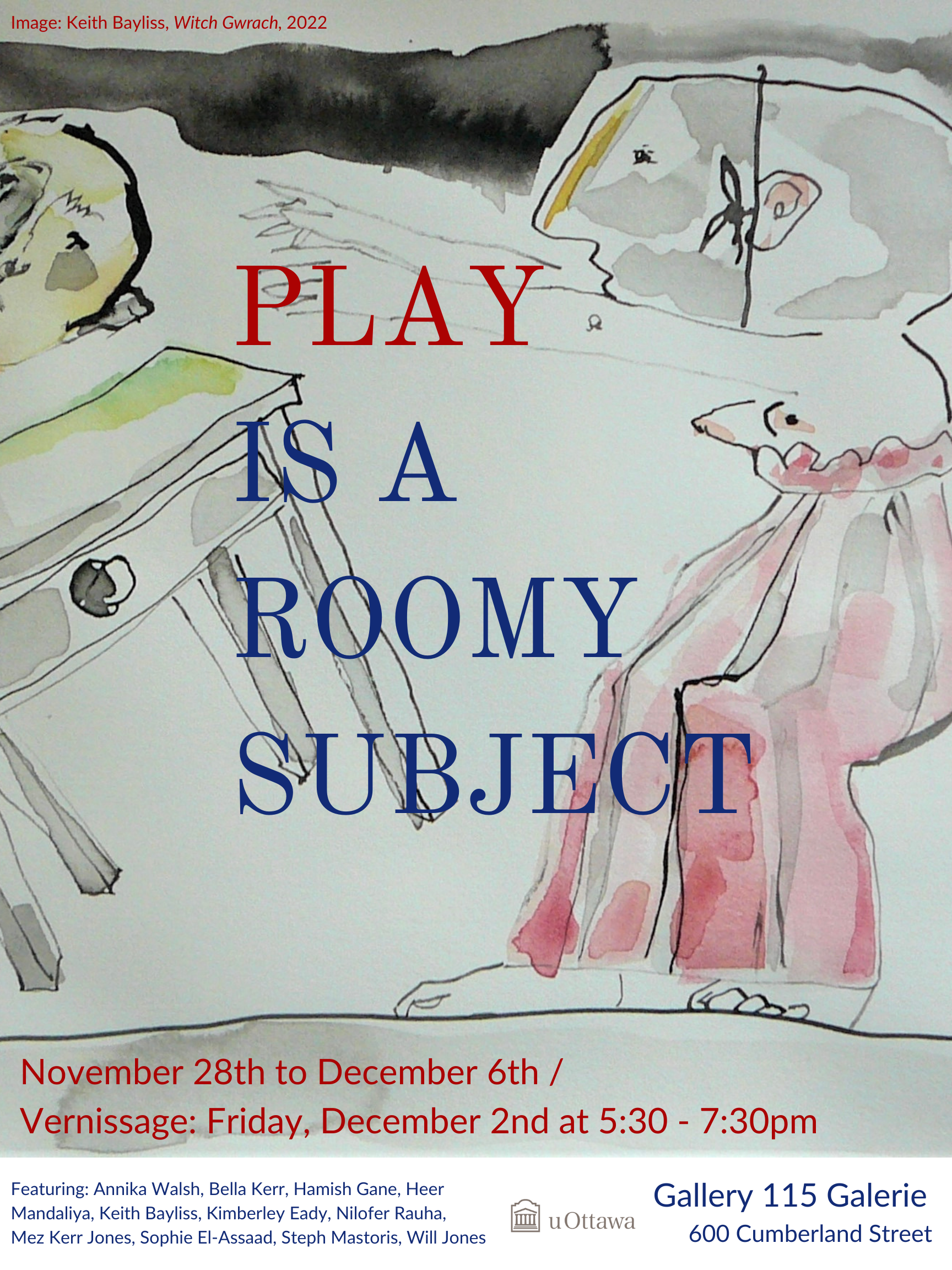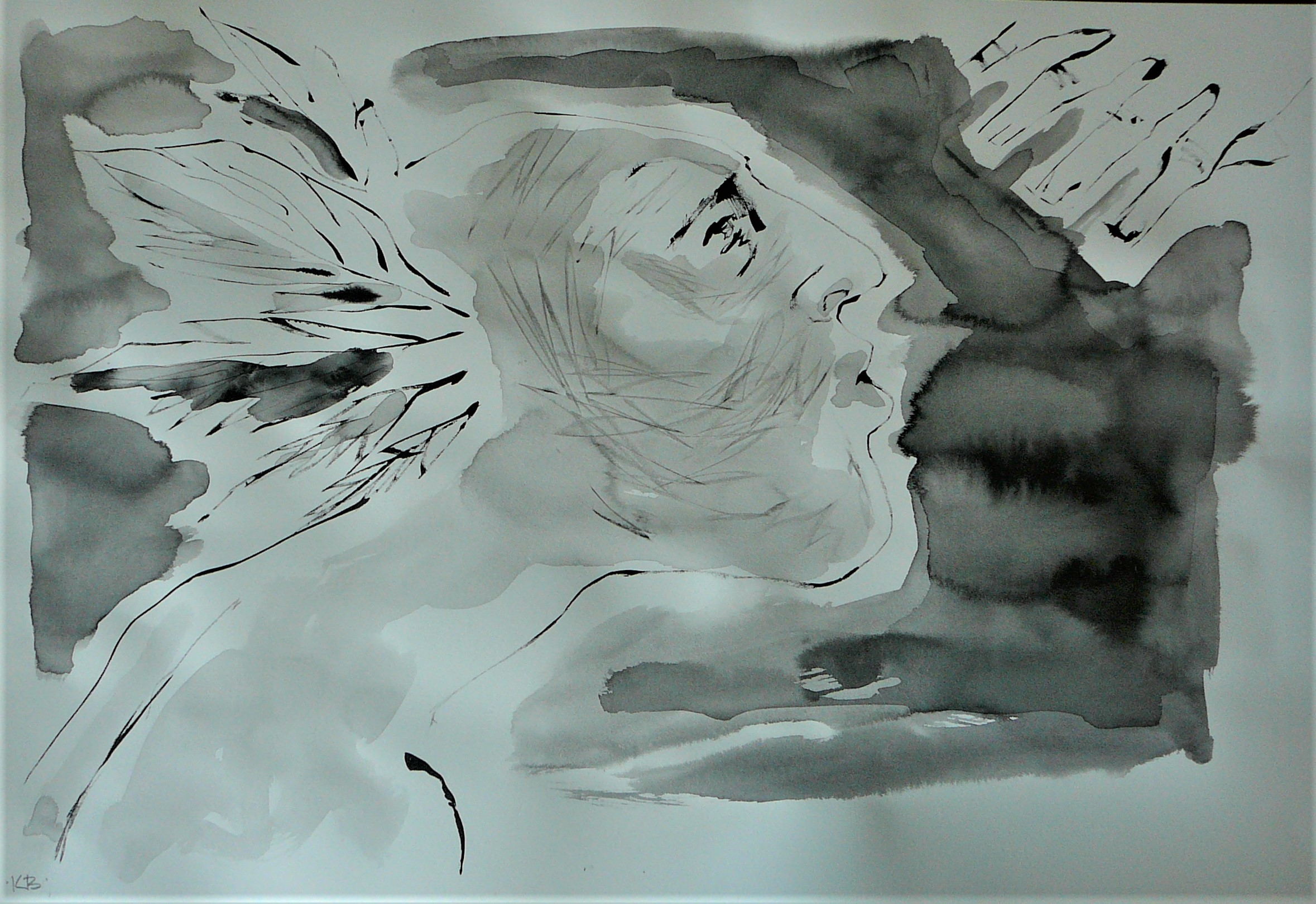Mission Gallery has been transformed by the artist. Its geometry and light will never seem quite the same again, filled as it has been with shining presences and the flight-paths of angels. I can’t help but feel that Keith’s work will remain long after the exhibition has gone, the memories of it imprinted on the very air and walls of the space.
Clive Hicks-Jenkins 2011
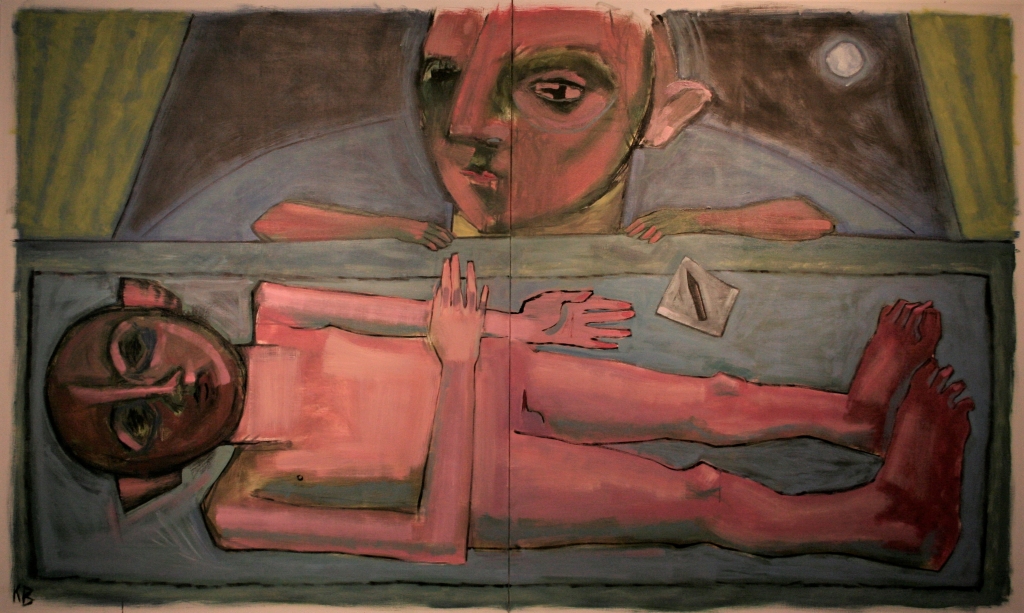
For this site specific exhibition, Keith Bayliss created an environment containing half life size figurative constructions in painted tissue and wood, with large scale paintings. An integral and complimentary part of the environment was a soundscape produced by his son Joseph Bayliss.
Several themes have preoccupied his artwork for some time and here he responds to them – particularly those of love, loss and need. In a society that has moved away from individual and collective use of places of religious celebration and personal contemplation, we see a daily increase in make-shift memorials to lost loved ones and mass emotional responses to the loss of national ‘personalities’. This exhibition allowed an opportunity to bring together these various related themes imagined over time and make themselves real in artworks. Mission Gallery’s unique and special atmosphere cannot help but influence the work placed there and Keith relished this powerful symbolism. As a former place of worship and self-exploration he utilised its past histories and architectural space to examine our need for the spiritual, creating a parallel with his art practice. By populating the room with tissue paper characters, his intention was to allow the visitor to find their Hortus Conclusus, their Enclosed Garden, a sympathetic space in which to think, feel and remember. These fragile figures would act as vessels, containers for the thoughts and feelings of those who came to visit.
Hortus Conclusus: The Enclosed Garden was exhibited at Mission Gallery Swansea from 4th February to 24th March, 2012.
Photography by Inger Richenberg and Thomas Smith
Keith’s casts of angels, fools, child-adults and voyagers are innocents adrift in a world we view with a sense of wonder, because he has the artist’s gift of enabling us see it as they do. While their bodies are often presented as frail and schematic, their faces are beautiful and brimming with humanity… His tenderness for his creations reaches out to the viewer and catches like a sob in the chest, because we feel for them and fear for them in equal measure, these fragile participants in an ancient mystery.
Clive Hicks-Jenkins, 2011
